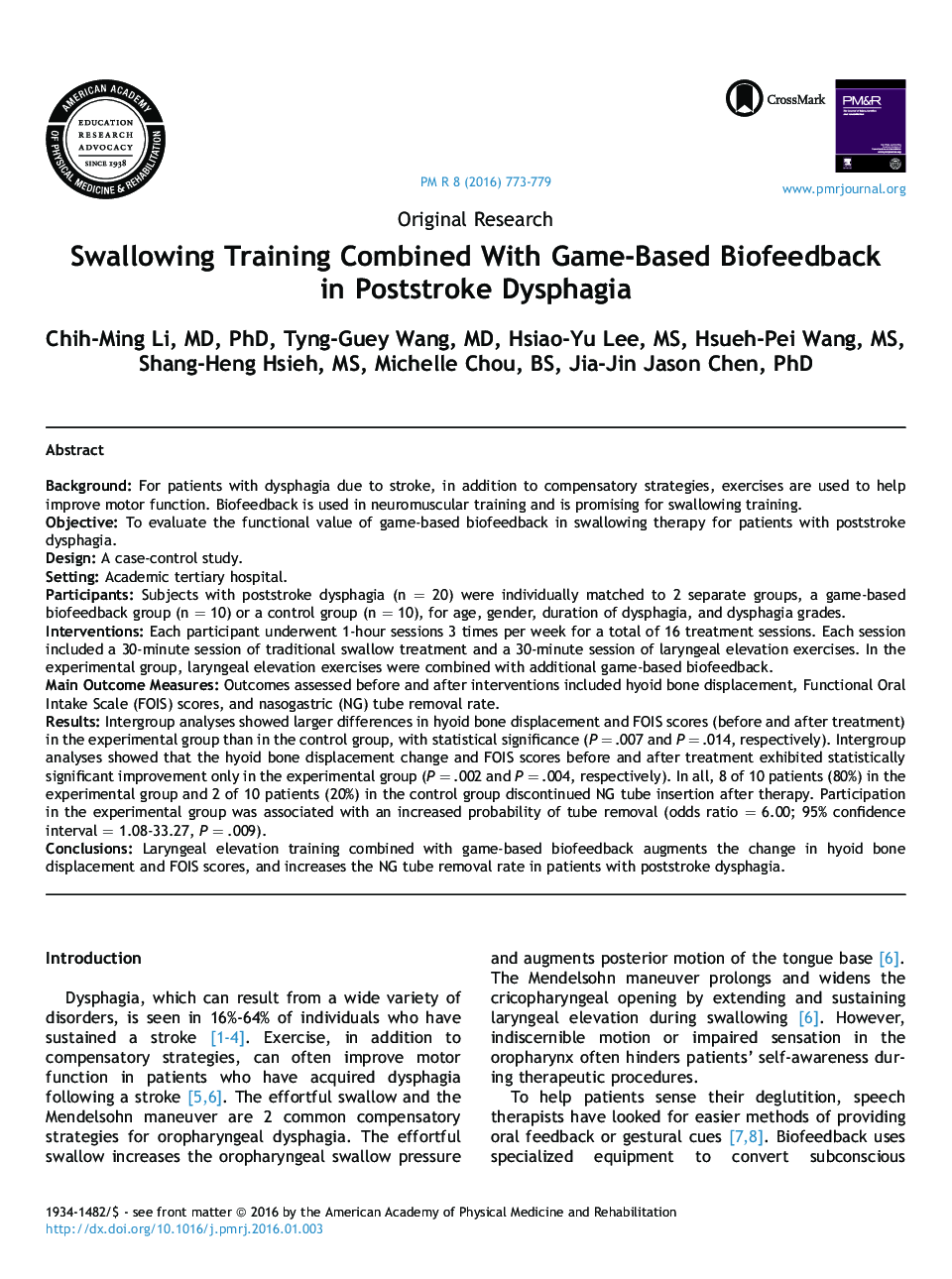| کد مقاله | کد نشریه | سال انتشار | مقاله انگلیسی | نسخه تمام متن |
|---|---|---|---|---|
| 2704620 | 1403962 | 2016 | 7 صفحه PDF | دانلود رایگان |
BackgroundFor patients with dysphagia due to stroke, in addition to compensatory strategies, exercises are used to help improve motor function. Biofeedback is used in neuromuscular training and is promising for swallowing training.ObjectiveTo evaluate the functional value of game-based biofeedback in swallowing therapy for patients with poststroke dysphagia.DesignA case-control study.SettingAcademic tertiary hospital.ParticipantsSubjects with poststroke dysphagia (n = 20) were individually matched to 2 separate groups, a game-based biofeedback group (n = 10) or a control group (n = 10), for age, gender, duration of dysphagia, and dysphagia grades.InterventionsEach participant underwent 1-hour sessions 3 times per week for a total of 16 treatment sessions. Each session included a 30-minute session of traditional swallow treatment and a 30-minute session of laryngeal elevation exercises. In the experimental group, laryngeal elevation exercises were combined with additional game-based biofeedback.Main Outcome MeasuresOutcomes assessed before and after interventions included hyoid bone displacement, Functional Oral Intake Scale (FOIS) scores, and nasogastric (NG) tube removal rate.ResultsIntergroup analyses showed larger differences in hyoid bone displacement and FOIS scores (before and after treatment) in the experimental group than in the control group, with statistical significance (P = .007 and P = .014, respectively). Intergroup analyses showed that the hyoid bone displacement change and FOIS scores before and after treatment exhibited statistically significant improvement only in the experimental group (P = .002 and P = .004, respectively). In all, 8 of 10 patients (80%) in the experimental group and 2 of 10 patients (20%) in the control group discontinued NG tube insertion after therapy. Participation in the experimental group was associated with an increased probability of tube removal (odds ratio = 6.00; 95% confidence interval = 1.08-33.27, P = .009).ConclusionsLaryngeal elevation training combined with game-based biofeedback augments the change in hyoid bone displacement and FOIS scores, and increases the NG tube removal rate in patients with poststroke dysphagia.
Journal: PM&R - Volume 8, Issue 8, August 2016, Pages 773–779
